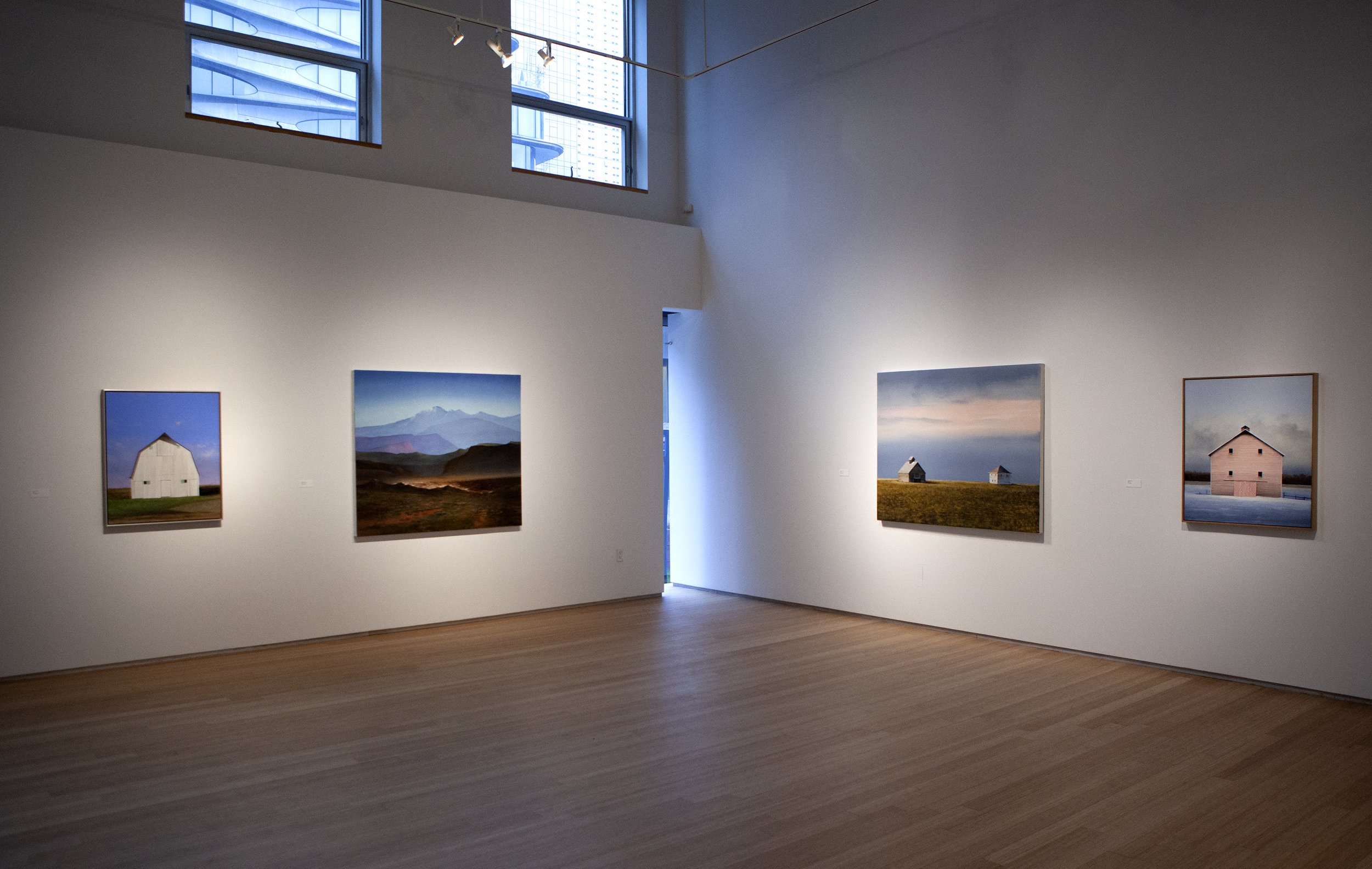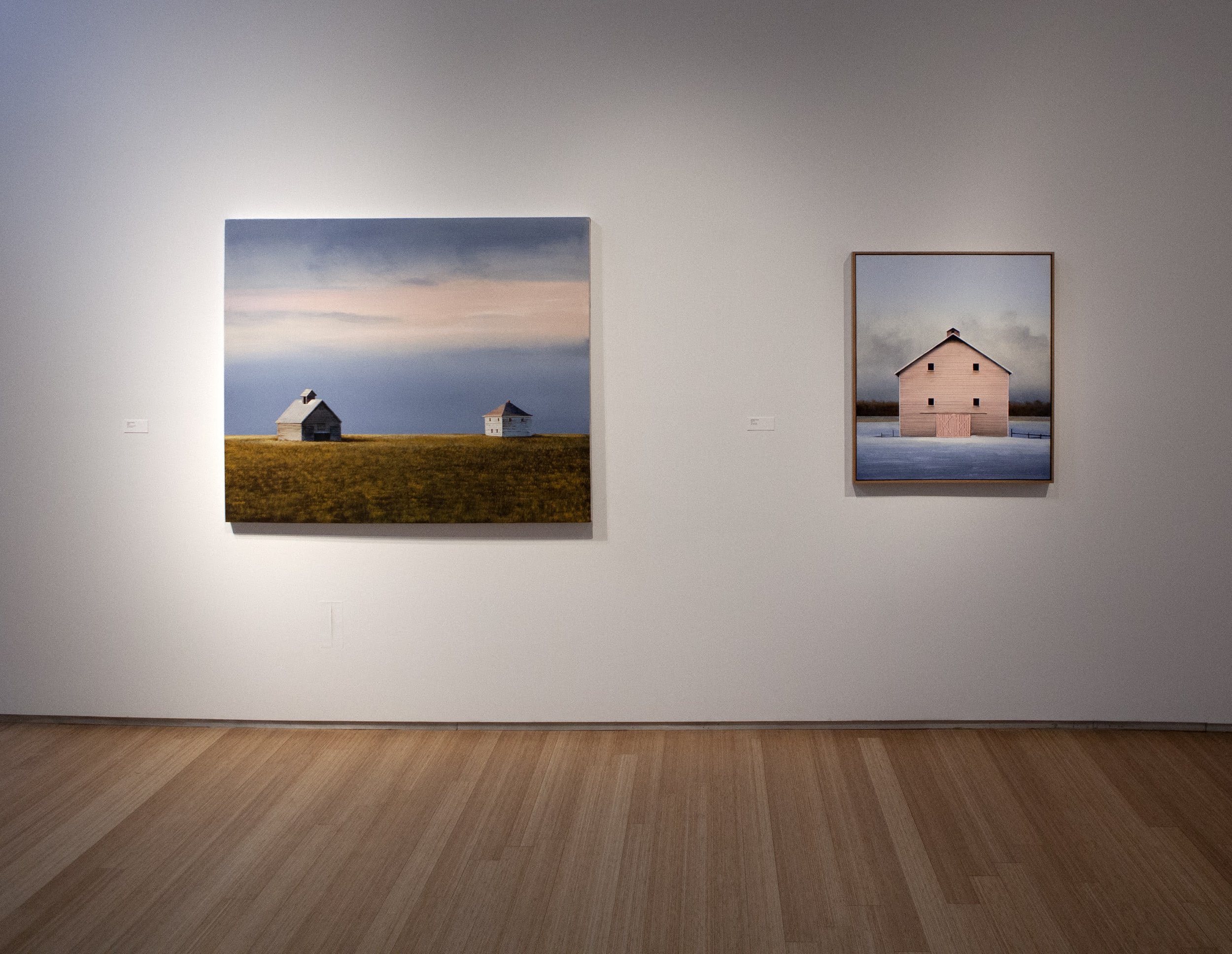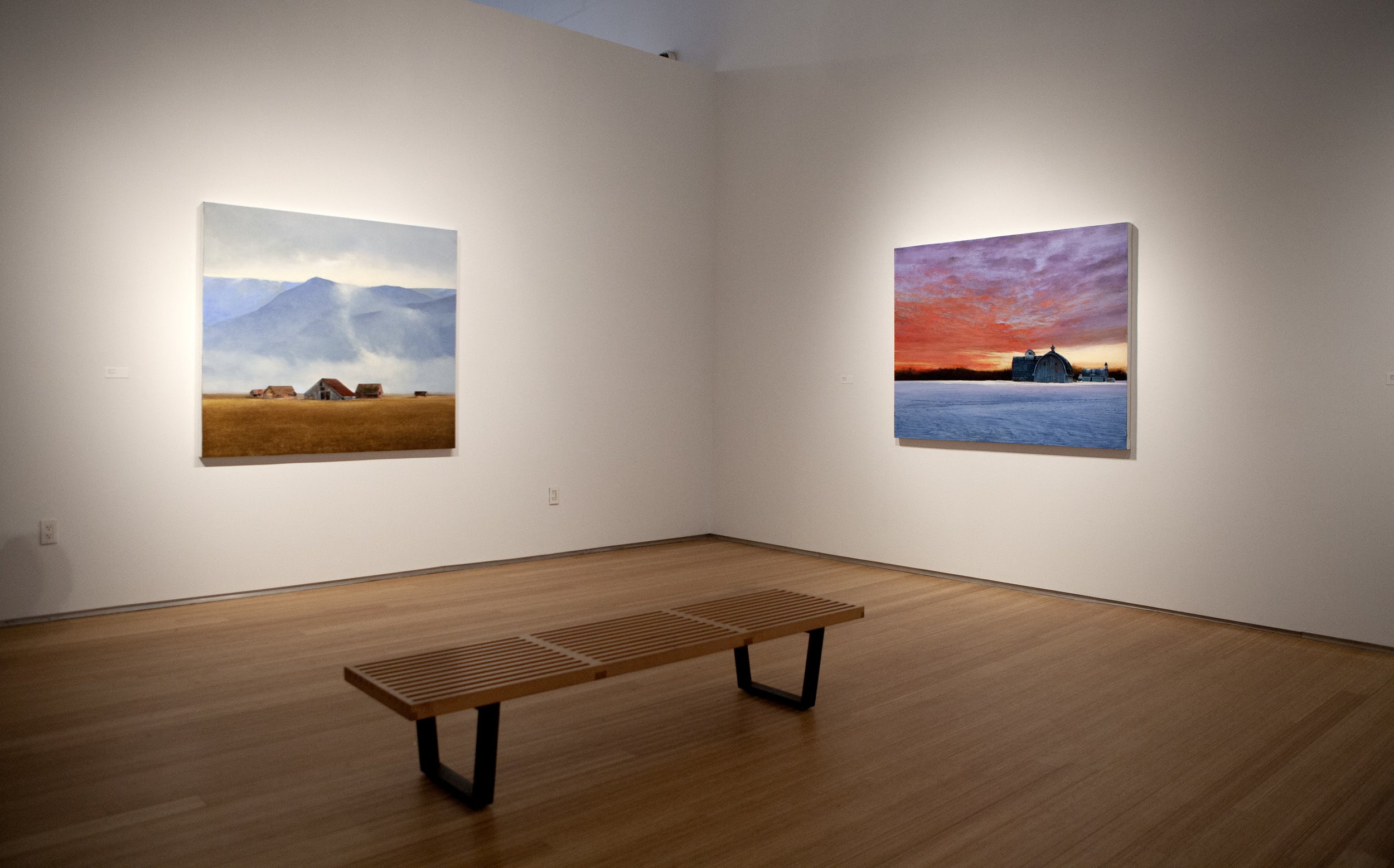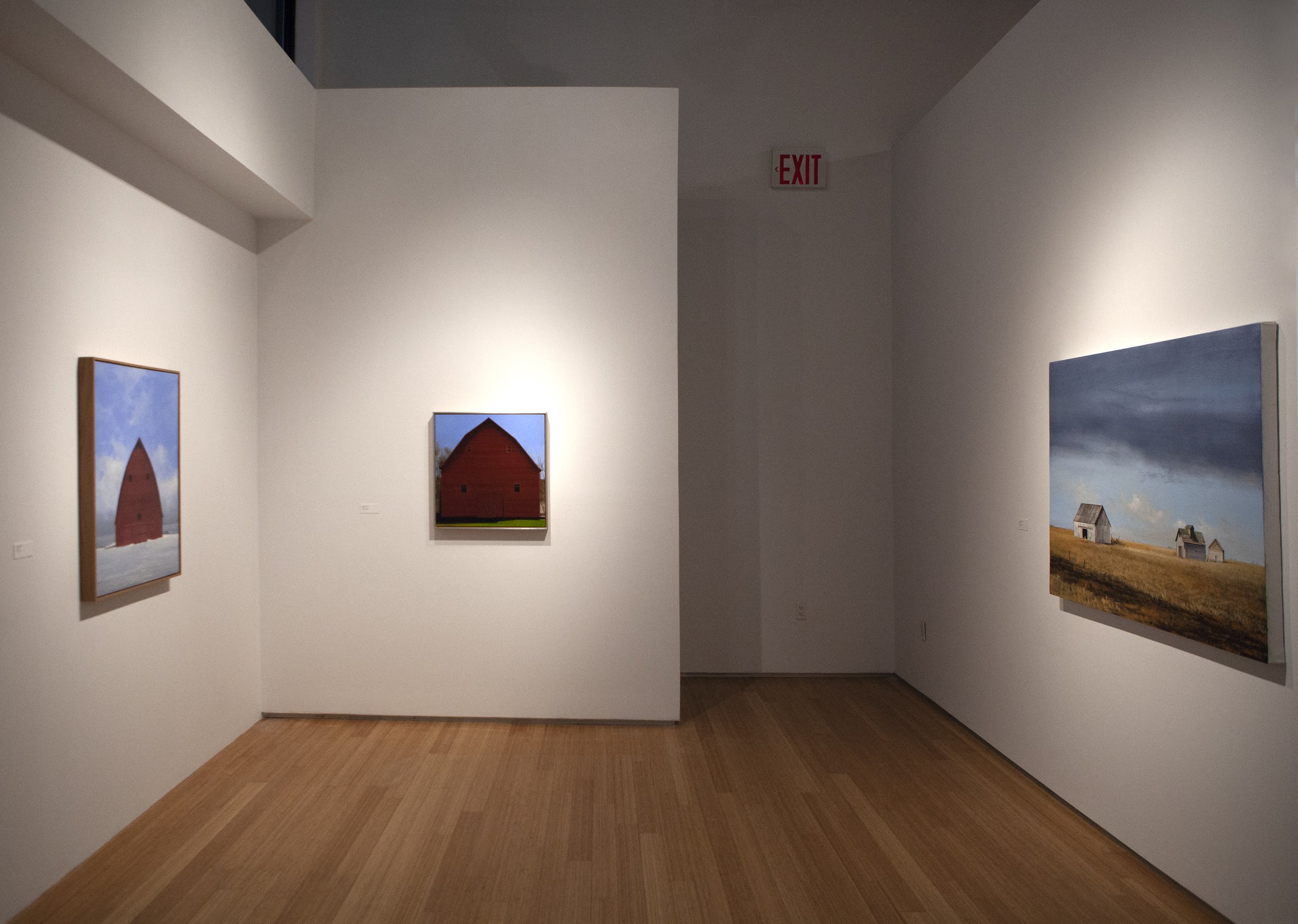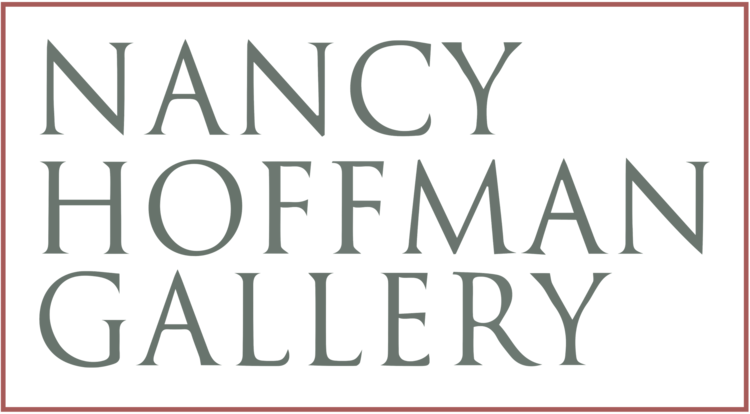Michael Gregory
If You Came This Way
March 17 - April 30, 2022
On March 17 an exhibition of new oil paintings by Michael Gregory, opens at Nancy Hoffman and continues through April 30. The show’s title comes from a T.S. Elliott poem, Little Gidding:
If you came this way, taking the route you would be likely to take, from the place you would be likely to come from… And what you thought you came for is only a shell, a husk of meaning…Either you had no purpose or the purpose is beyond the end you figured.
While not elaborating on the poem’s meaning in conjunction with the new paintings, the artist writes:
“I hope the work evokes the consideration that finding purpose, home, a “path” through life is a goal for all of us. Its achievement is not a given nor an end in itself, however the effort is a trait that runs deep in our collective spirit.”
Since 2000 Gregory has focused on the American iconic landscape. A sense of loneliness pervades his paintings, which may include a barn or farm community, a silo, telephone poles, fences, fields of hay, cloud or star-filled skies. His point of departure is love of the land, particularly the West that John Steinbeck described in his books. The artist does not seek a photoreal representation of the land and sky; each painting in oil on canvas is a reimagined vision of what he has seen as he drives through vast stretches of the land and skyscape. Silence permeates each canvas. From pink sunset skies to plowed hay fields to snow-covered barns, quiet prevails.
In the new work the artist has incorporated his experience of living on the East Coast in the Hudson River Valley, after spending most of his life in California. Gregory takes advantage of the four seasons, embracing the different topography and light; exploring the palette of snow-filled fields. Barns of rainbow hues appear inspired by the Pennsylvania Dutch tradition of using pink, blue, green, yellow to bedeck structures in that part of the world. Most of the paintings embrace color in a poetic, subtle and rich fashion.
While the apparent subject of the work is “the landscape,” these are not simply the landscape qua landscape. This is a terrain where space seems infinite, where light can shine in the sky uninterrupted by the detritus of civilization. These are paintings harking back to another time, yet achingly contemporary. Pared down to the essence of structure, a barn sets the stage for mood, time and place, arresting the eye as one views the fields and trees and skies. The poetry in the paintings is palpable; the sense of memory is undeniable. As important as the land, the structures, are Gregory’s skies, sometimes ominous, at others a peaceful blue, or golden lightfilled, bathing all that is earthly in its glow.
In Caesura (a word that signifies a metrical pause or break in a verse) a big open blue sky with a pink cloud tops a verdant field and bathes two farm structures in warm light. There are two buildings--seeming to be filled with age and history--in the landscape separated by a “caesura.” Each structure is unto itself, as each verse in a poem is unto itself and yet connected to what comes before and after. The tension between the two structures tells the tale. A new day is dawning.
These are American paintings filled with Lewis and Clark’s commitment to the future, and to the preservation of a landscape unique in the world.
Gregory has written:
“In May of 1804, Meriwether Lewis and William Clark departed from Saint Louis, Missouri to map the newly acquired Louisiana Purchase and search for what was then a centuries’ old quest for a passage across the interior to the Pacific Ocean. Their journey was a nation’s commitment to the future. “This urge for exploration and discovery is hardwired in our genes, from our earliest trek out of Africa to our voyage into space. It is an impulse that recurs with each generation. What continues to amaze me in a formal way is the contrast of man-made structures to the natural environment and how they fit seamlessly into their setting, ghostly sentinels to man’s hubris.“
These paintings are not specific to actual place; they are composite reminders of where we’ve been. The meditative quality of driving long distances is recreated in the studio, with its attendant solitude and silence. Our response to landscape is visceral. Every sunrise is miraculous and novel.” One cannot help but feel what Gregory has stated when looking at these glowing works, that indeed, “every sunrise is miraculous and novel,” and every wisp of fog a fleeting moment of poetry.
The artist’s work has been shown at The Arkansas Arts Center, Little Rock; Arvada Center for the Arts and Humanities, Denver; Boise Art Museum, Idaho; Boulder Center for the Visual Arts, Colorado; The Butler Institute of American Art, Youngstown, Ohio; California College of Arts and Crafts, Oakland; Center for the Arts, Vero Beach, Florida; Evansville Museum of Arts, History and Science, Indiana; Fine Arts Center Galleries, University of Rhode Island, Kingston; The Fine Arts Museums of San Francisco, California; Flint Institute of Arts, Michigan; Florida International University, Miami; Fort Collins Museum of Contemporary Art, Colorado; Hunter Museum of Art, Chattanooga, Tennessee; Maier Museum of Art, Randolph-Macon Woman’s College, Lynchburg, Virginia; Richmond Art Center, California; San Francisco Arts Commission Gallery, California; San Jose Institute of Contemporary Art, California; San Mateo Arts Council, California; Selby Gallery, Ringling School of Art and Design, Sarasota, Florida; The Charlotte and Philip Hanes Art Gallery, Wake Forest University, Winston-Salem, North Carolina.
His work is included in the collections of the Boise Art Museum, Idaho; Delaware Art Museum, Wilmington; Denver Art Museum, Colorado; Evansville Museum of Arts, History and Science, Indiana; San Jose Museum of Art, California, and numerous private collections.
He was Martha and Merritt deJong Memorial Artist-in-Residence, Evansville Museum of Arts, History and Science, Indiana in 2003.
Michael Gregory was born in Los Angeles in 1955. He received a Bachelor of Fine Arts from the San Francisco Art Institute. He resides in Bolinas, California, and Rhinebeck, New York with his wife.

